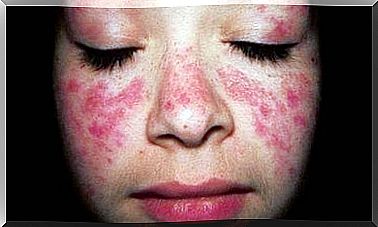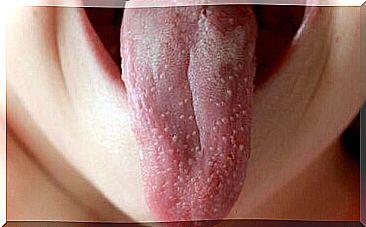What Is Paget’s Disease?
Paget’s disease is a disease that affects bones by altering their density and, consequently, their characteristics as well as their functionality.

The Paget’s disease is a condition that affects the bones by altering their features and functionality. Thus, bone structures can vary in consistency, density and even size. It is also known as osteitis deformans.
Nowadays, it has been shown to affect certain bones more often, such as the spine, skull, pelvis or femur.
How does bone tissue work?
In general, within the bone tissue we can find characteristic cells: osteoclasts and osteoblasts. The former are responsible for destroying old or outdated bone tissue. While the second regenerates the corresponding areas. Thus, our bones are continuously renewed thanks to the coordinated functions of these cells.
However, in Paget’s disease, osteoclasts and osteoblasts act faster and overactively. This then causes abnormal growth as well as weakening of certain regions of the bone.
Symptoms of Paget’s disease
A high percentage of clinical cases are asymptomatic. In other words, the patients do not show symptoms. However, these people may develop a series of signs or changes associated with this disorder. Some of the most common symptoms are:
- Intense pain in the bones that remains constant over time: whether at rest or during movement
- Joint genes that can give rise to osteoarthritis: as a rule, these genes appear more often in certain structures such as the hip, knees and shoulders
- Headache or headache: this can occur simultaneously with hearing loss
- Kyphosis or a feeling of numbness in the spine
- Pagetic skull : increase in size of this set of bones
- Arrival of other bone deformities, which affect the femur or the tibia for example
- Sensitivity to fractures

The causes
The causes of Paget’s disease are not well understood. Nevertheless, according to research, it could be due to an infection of viral origin, such as measles. The influence of genetic (family history) and environmental (exposure to certain chemicals) factors is also being studied.
Diagnosis of Paget’s disease
Usually, the medical team performs a set of medical tests that identify this disorder and rule out other similar symptoms. Here are the tests carried out:
- Physical examination: specialists check the patient’s symptoms and, if applicable, the family and medical history
- X-rays showing areas of rapid bone creation and destruction
- Computed Axial Tomography or CAT
- Bone scanner
- Bone biopsy
- Other routine exams such as blood and urine tests
Treatment of Paget’s disease
Normally, no specific treatment is needed for this disease. Indeed, most cases are asymptomatic. However, doctors may recommend the application of certain therapies in the most severe cases:
- Consumption of drugs or active substances: mainly bisphosphonate compounds and calcitonin. They may also prescribe anti-inflammatory drugs to reduce inflammation. As well as pain relievers to relieve pain or discomfort
- Surgical procedures for fractures, severe pain or severe bone deformity

Preventative measures
Effective measures that reduce the risk of suffering from Paget’s disease have not yet been found. However, it is essential to take care of our health in order to enjoy a correct quality of life.
For that, it is enough to carry out a moderate physical activity and to follow a balanced, adapted and healthy diet . Besides, it is best to avoid unhealthy habits like alcoholism, smoking or the consumption of toxic substances like drugs.
Finally, remember that Paget’s disease is linked to genetic variants that predispose the person to undergo alterations in bone metabolism. Therefore, it is important to report the presence of family cases and to take note of the complete medical history. In addition to the affected family members, this also includes the degree to which the disease is affected.









